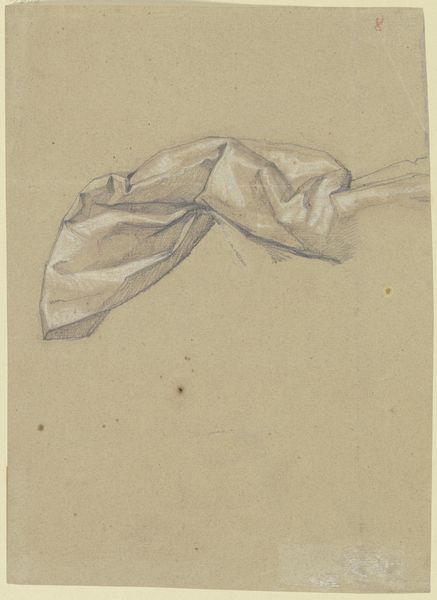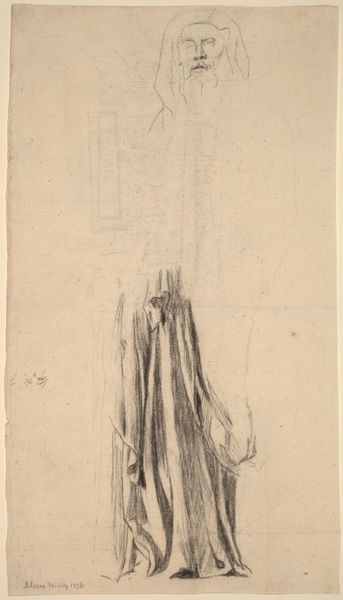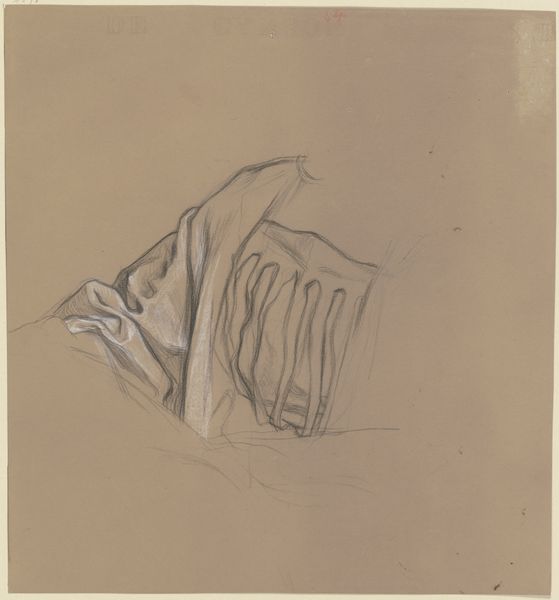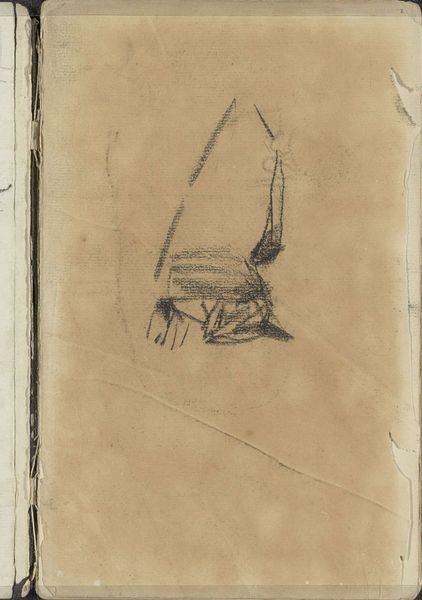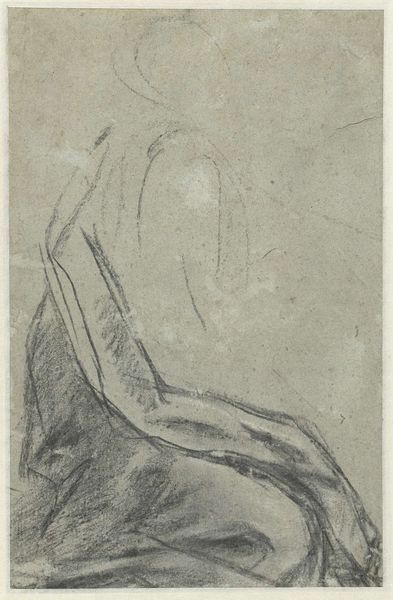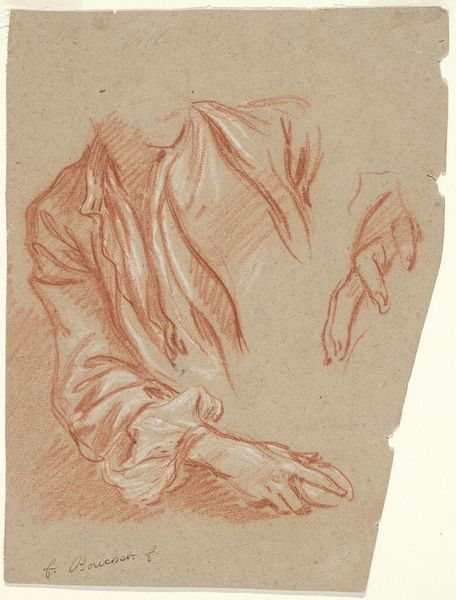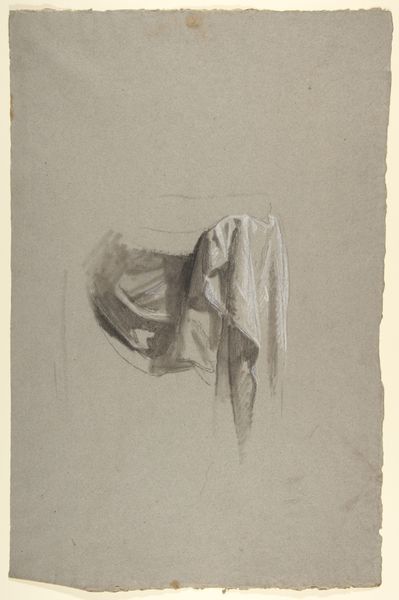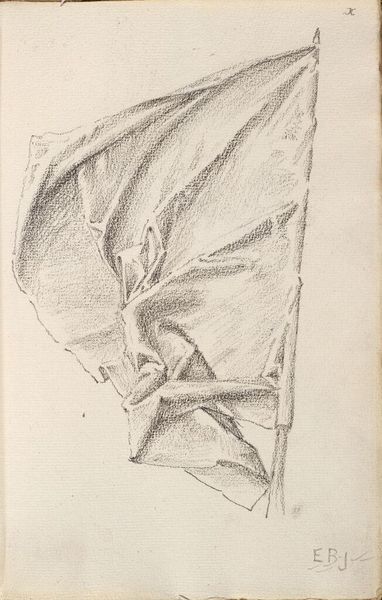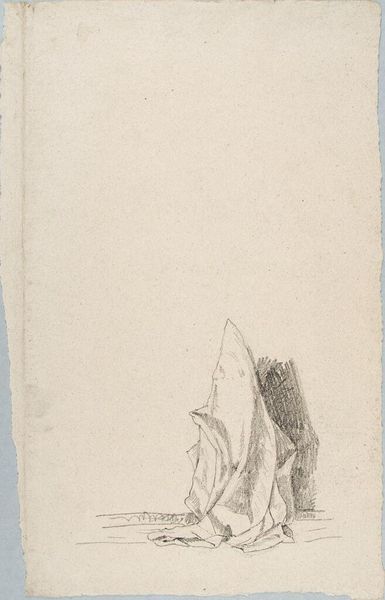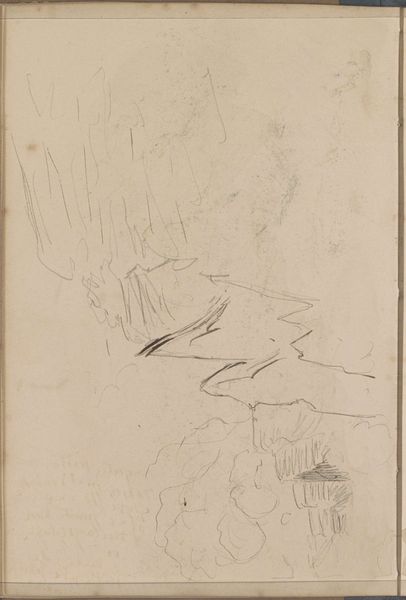
drawing, pencil
#
portrait
#
drawing
#
pencil sketch
#
pencil
#
portrait drawing
#
watercolour illustration
#
academic-art
#
realism
Dimensions: height 315 mm, width 236 mm
Copyright: Rijks Museum: Open Domain
Curator: Here we have Jan Veth's "Study of the Jacket and Arm of Geheimrat M. Kempner," dating from between 1874 and 1925. Editor: My first thought is how intensely textural it is, almost like a topographical map of fabric. You can practically feel the weight of that jacket just by looking at the rendering. Curator: Indeed. Veth, known for his portraits, captures more than just likeness. What's compelling is how a seemingly mundane fragment – an arm and jacket – becomes a study in power and class. Editor: It speaks volumes about the sitter without revealing their face. Notice the artist’s skillful use of pencil; the shading emphasizes the luxuriousness of the fabric. You can see the labor in rendering each fold. Was this jacket custom-made? What materials were employed, and who were the tailors involved? These choices create both status and reveal its production, no? Curator: Precisely! The deliberate focus on clothing opens a dialogue around identity. What does it mean to present oneself in this particular jacket, at this particular historical moment? Was it an intentional representation of authority, and can we discern elements of cultural capital from its visual elements? Editor: And look closer, the pencil sketch is rendered over a watercolor illustration creating a visual history within the art itself, revealing how garments become cultural products, circulating meanings and affecting material culture, particularly on questions about value. Curator: Very interesting observations on its cultural circulation! This pencil sketch offers a glimpse into how portraiture can subtly reinforce or subvert societal power structures, even when focusing on seemingly inanimate objects. It's a conversation about societal and historical conventions in representation. Editor: I agree; seeing art history intersecting with materialism helps understand labor, luxury and production’s effect on value – even today. Curator: Exactly. Hopefully, this look at "Study of the Jacket and Arm" encourages visitors to investigate art in its societal, economic, and cultural roles. Editor: Agreed. The rendering captures texture so well while also highlighting social status. Seeing a fragment like this helps you consider where that status comes from: its materials and manufacturing history.
Comments
No comments
Be the first to comment and join the conversation on the ultimate creative platform.
